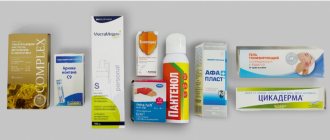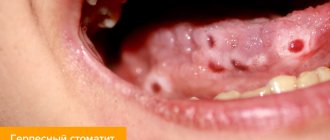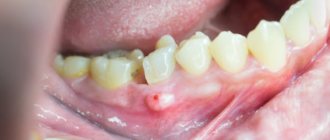Cold (ice pack, cold compress), elevated position of the affected limb and rest during the first day help relieve swelling after a bruise. Apply ointments with anti-edematous and anti-inflammatory effects - Heparin, Lyoton gel, Bruise Off, Troxevasin.
From the second day, physical therapy can be prescribed - magnetic therapy, UHF, then they are supplemented with electrophoresis, diadynamic therapy, ultrasound. For mild bruises, you can use folk remedies - salt, semi-alcohol compress, lotions with wormwood infusion.
In the absence of complications, swelling decreases significantly by the 3rd day, and completely disappears by the end of the week. If the condition worsens and pain and swelling increase, you need to be examined by a traumatologist. A mandatory visit to the emergency room is necessary in case of injury to the head, abdomen, back or chest; a dangerous sign is the inability to move a limb, weakness, or fainting.
How to relieve swelling after a bruise and prevent its development
To relieve swelling after a bruise and prevent its formation during injury, you need to apply cold. It's best to grab an ice pack or frozen food from the freezer. They are wrapped in a towel and held for 15 minutes, then removed and after half an hour the procedure is repeated. If there is no ice, use a wet towel or a heating pad filled with cold water.
If there was a bruise to a limb, then it is provided with rest and an elevated position. If movement is necessary, an elastic bandage is applied to the affected joint; it prevents active blood flow. A tight bandage inhibits the development of edema, but it can be used for no more than half an hour, as blood circulation is impaired.
If the face, head, or upper body are injured, a high pillow is placed while resting to ensure blood flow. If the injury was in the area of the coccyx, sacrum, or lower back, then you need to lie on your side or stomach. Abrasions or wounds are washed and treated with hydrogen peroxide before applying ice. The damaged skin is smeared with iodine or brilliant green and covered with a bandage, fixed with a bandage.
Consequences
Complications with bruises are quite possible. It all depends on the nature of the injury and which area of the face was damaged. Possible consequences include:
- Nerve damage. completion. This is quite dangerous, since it is not always possible to fully restore their functionality. This means that the affected part of the face may stop moving;
- Deterioration of vision. If the area around the eyes is bruised, there is also the possibility of damage to the nerve responsible for visual functions. Again, the outcome depends on the nature of the injuries. Both partial and complete loss of vision is possible, which is much less common;
- suppuration at the site of the bruise in the form of an abscess;
- bleeding that, if not treated immediately, may lead to fainting or shock;
- Cyst formation in the presence of hematomas.
In case of serious injuries, the bruise may be accompanied by a concussion, deformation of the bones of the nose or jaw. As a result, a person may later suffer from conditions such as sinusitis or sinusitis.
How to remove swelling from the face after a blow with the help of medicine
If your cheek is swollen after a blow, applying ointments that thin the blood and facilitate venous and lymphatic drainage will help relieve the swelling. They are used on the first day along with cold (in the intervals between applying ice) 3-4 times a day. Apply a thin layer to the area of swelling:
- Heparin ointment - relieves swelling and inflammatory reaction, penetrates deeply into the skin, helps resolve hemorrhage;
- Bruise Off - contains an extract from leech and pentoxifylline, which activates local blood circulation, the drug stimulates the movement of lymph, has a toning effect that masks traces of a bruise;
- Lyoton gel - heparin in the gel quickly reduces swelling, helps eliminate pain and inflammation;
- Troxevasin gel - troxerutin reduces vascular permeability, which prevents facial swelling, increases the tone of the venous walls and accelerates the outflow of blood from the site of injury;
- Reparil gel - has a pronounced analgesic and anti-inflammatory effect, relieves swelling by inhibiting the transition of fluid into tissue, improves microcirculation.
For severe swelling, diuretic tablets (Furosemide, Hypothiazide) are used in the first two days, anti-inflammatory and painkillers (Diclofenac, Ibuprofen), but they are of auxiliary value. Post-traumatic edema is associated with tissue damage and goes away only after tissue recovery.
If the integrity of the skin is compromised, it is recommended to apply Rescue or Ambulance balm; if there is a risk of suppuration, use Levomekol ointment.
The process of formation of a bruise under the eye
Darkening of the tissues with characteristic swelling under the eye does not cause any particular inconvenience. Often the only reason a person wants to get rid of it is the aesthetic component.
Purple discoloration of the skin and swelling in the damaged area occur for two reasons. Firstly, due to the characteristics of the skin, as well as adipose tissue, which accumulates fluid and also forms bags around the eyes. They appear with age, due to a decrease in tissue elasticity, but are also found in young people. Stress, lack of sleep, long hours of working at the computer, and alcohol consumption affect the formation of such bruises. Masks, patches, and biorevitalization will help eliminate them.
In the worst case, kidney and heart diseases become the source of cosmetic defects.
Another reason is due to the complete or partial rupture of the smallest vessels upon impact. Flowing from the capillaries, the blood concentrates in the soft tissues. When the liquid has not yet coagulated, the area becomes red and then acquires a bluish tint. The process is accompanied by pain when pressing on the burgundy-violet center. It is the elimination of the hematoma that will be discussed in the article.
Physiotherapy
Magnetotherapy
Physiotherapeutic procedures are prescribed from 2-3 days to speed up blood circulation, resolve bruises and swelling. They help heal damaged tissues and reduce residual effects after a bruise. Apply:
- magnetic therapy - treatment with an alternating magnetic field reduces pain and swelling, improves tissue nutrition and blood flow, can be used on damaged skin starting from the second day;
- UHF - ultra-high-frequency waves have a deep warming and absorbing effect, indicated in the presence of seals;
- electrophoresis of drugs (Heparin, Iodine, Lidaza) helps quickly relieve swelling and eliminate skin hemorrhages, prevents post-traumatic inflammation;
- diadynamic therapy using a gentle method - currents with different wave amplitudes have a massaging effect and activate blood flow;
- ultrasound – ultrasonic waves stimulate blood movement, accelerate the restoration of damaged tissues, can be used with ointments (phonophoresis).
After relieving pain and inflammation, manual massage is used to improve the movement of blood and lymph. It is carried out not at the site of injury, but along the path of venous blood and lymphatic fluid. For example, for swelling of the face, the cervical-collar area is massaged. In case of traumatic brain injury, massage is contraindicated for the first month.
What to do and how to remove it from folk remedies
To relieve swelling and get rid of bruises, from the second day use:
- salt compress - take a teaspoon of salt with 200 ml of water, soak a white cotton cloth and apply to the bruise for an hour;
- semi-alcohol or vodka lotions - half-diluted alcohol or vodka is used for half-hour compresses, you can also take tincture of calendula or mint and mix with water in a ratio of 1:4;
- herbal decoctions (a tablespoon per glass of boiling water, keep on low heat for 20 minutes, strain): wormwood leaves, dried grass, comfrey root, fireweed, plantain leaf, sage, soak gauze with them and apply to the site of the bruise for an hour;
- cottage cheese - grind to a homogeneous consistency and spread on gauze in a layer of 2 cm, cover the top with a cloth and place in the freezer for 10 minutes, keep for 15-20 minutes on the damaged area;
- cabbage leaf - beat with a hammer until juice appears and apply to injured skin for 4-6 hours.
Bodyaga helps to reduce hemorrhage and eliminate bruises after a bruise; it is mixed with water and the paste is applied to the injury area. Most external products are used only on intact skin. If there is a wound or abrasion, aloe and Kalanchoe juice, which have a wound-healing effect, are needed in the first days.
How long does it take for a tumor to go away after an impact?
The swelling after an impact, in the absence of complications, goes away within 3-7 days, depending on the location and severity of the injury. A sign of a normal recovery period is a gradual decrease in pain, swelling, and the ability to move the affected part of the body.
When complications arise or there is a fracture, swelling and pain increase all the time, mobility is absent due to unbearable pain, the area of injury turns red and becomes hot to the touch. If the victim’s condition begins to worsen the next day, then this is a reason to immediately call a doctor.
Concealing bruises
The technology for visually hiding a hematoma on the face is the same for both a painful injury and a cosmetic defect that prevents you from being beautiful in the morning. If there is a risk of failing an interview, an important meeting or a festive event, because a black eye received the day before takes a long time to disappear, special makeup will help you.
The video will tell you how to remove a five-day-old hematoma from the area between the eyebrows and eyelid:
No less problematic is the elimination of the consequences of damage to the bridge of the nose, a severe head injury, as well as an illness that is not associated with physical damage, but affects the functioning of the entire body, which is why bags and dark circles appear under the eyes. A combination of the right eyeshadow color will help remove them.
In the video you will find tips on grouping cosmetics to hide morning dark circles under the eyes:
Why does swelling persist for a long time after a bruise?
If after a bruise the swelling does not go away for a long time (more than 5 days), then there is a risk of suppuration, extensive or deep tissue damage. Recovery is also slower in cases of weak blood circulation in elderly patients with vascular diseases or venous insufficiency (for example, varicose veins of the lower extremities).
It is impossible to independently determine the cause of swelling and prolonged stagnation of blood, difficulty moving, therefore, such symptoms require examination by a surgeon or traumatologist, radiography and other diagnostic methods.
Diagnostics
A bruise is easy to diagnose, but only doctors can determine its severity and possible complications. Therefore, if for any reason the injured area is bothering you, it is better not to waste time and seek professional help. The diagnosis can be made:
- inspection;
- palpation;
- Assessment of symptoms and complaints;
- In some cases, an ultrasound or x-ray examination may be required.
Diagnosis consists of determining not only the presence of a bruise, but also its severity. There are four degrees:
- First degree. This is the easiest and least dangerous option, involving a slight change in the structure of the subcutaneous tissue. There is no bleeding or hematoma, but blue skin discoloration is quite possible. For the first degree of injury, visiting a doctor is usually not required. It is quite possible to limit yourself to home remedies, which, with the right approach, will help eliminate symptoms in 5-7 days;
- Second step. In this case, significant damage to the subcutaneous and muscle tissue occurs. Severe swelling, pain and even hematoma may appear. It is better to treat such a bruise with medications together with physiotherapeutic procedures;
- Third degree. It damages not only muscle tissue, but also tendons. In some cases, the integrity of the skin may be compromised. Since there is a risk of developing an infectious process, examination by a doctor is mandatory.
- Fourth degree. This is the most severe and dangerous degree of injury. It is always accompanied by injuries not only to soft tissue, but also to bone tissue. In this case, there is a high risk of developing various types of complications. It is imperative to seek qualified medical help.
Accordingly, the type of treatment will directly depend on the degree and nature of the bruise.
When to see a doctor
You need to visit the emergency room in all cases of injury to the head, chest, back, or abdomen. They can have serious consequences in the future, and it is difficult to assess the condition of the victim in the first hours. Often a person feels satisfactory due to the pain-relieving effect of the release of stress hormones, even with severe injury.
Warning signs requiring emergency medical attention include:
- severe weakness;
- pale skin and cold sweat;
- drop in blood pressure (below 100 mm Hg for systolic, that is, the upper level);
- weak (thready) pulse;
- nausea and headache, dizziness, lethargy, stunned state;
- difficulty taking a deep breath, lack of air;
- interruptions in heart rhythm;
- fainting;
- inability to move due to weakness of the legs and arms;
- coughing up blood.
Extensive swelling with severe pain and difficulty supporting the limb often occurs with a fracture or dislocation, or torn ligaments. They require mandatory x-rays and sometimes require fixation with a plaster cast. Such injuries cannot be cured with external remedies and pills.
You can relieve swelling after a bruise in the first day with cold and ointments that facilitate the outflow of blood. In the future, physiotherapy is used, and for minor injuries, folk remedies are used. Prolonged pain and swelling are signs of serious injury or complications.
Prevention
Almost all of us have had bruises on the soft tissues of our faces in our lives. Unfortunately, this cannot be completely prevented. However, in order to at least minimize the risk, it is necessary to take basic precautions and safety measures. When it comes to children, it is important to teach them from an early age how to avoid traumatic situations.
If facial bruises do occur, do not leave it unattended and take appropriate measures. You can do this yourself or seek medical help.









